If you would like to enjoy the benefits of beautiful, straight teeth but do not want to deal with the hassles associated with traditional braces, then you may want to consider Invisalign®. Invisalign® is an alternative to traditional braces which uses clear, removable plastic aligners to gradually straighten your teeth. The aligners are virtually undetectable to others, making them a great option for adults who would like to avoid an unsightly mouth of metal. Heather F. Fleschler, DDS, FAGD, LVIF is proud to offer Invisalign® in Houston, TX.
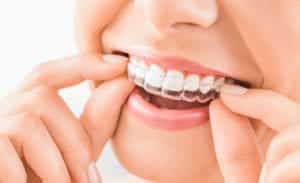
This page will provide you with an overview of the Invisalign® process, but it cannot advise you about your unique situation. The best way to find out whether this braces alternative is the right option for you is to speak with Dr. Heather Fleschler in person. Please call 713-660-6500 today to schedule a consultation at our Houston cosmetic dentistry office.
Invisalign® Benefits
Invisalign® offers several important benefits compared with traditional orthodontic treatment:
- Increased comfort – Your aligners have smooth edges, preventing your teeth and gums from being irritated during the straightening process.
- Removable – You can remove your aligners during meals and when brushing or flossing. This allows you to eat whatever you like, and it makes daily oral hygiene practices easier to complete.
- Invisible – The clear aligners will not be noticeable to others, making them a much more attractive solution than unsightly metal braces.
- Customization – Dr. Fleschler will take detailed impressions of your teeth which will be used to construct your Invisalign aligners, ensuring that your treatment is customized to address your unique orthodontic needs.
- Fewer office visits – You only need to visit Dr. Fleschler’s office once every 4-6 weeks, providing the additional convenience of fewer office visits compared with traditional orthodontic treatment.
Am I A Candidate For Invisalign® In Houston, TX?
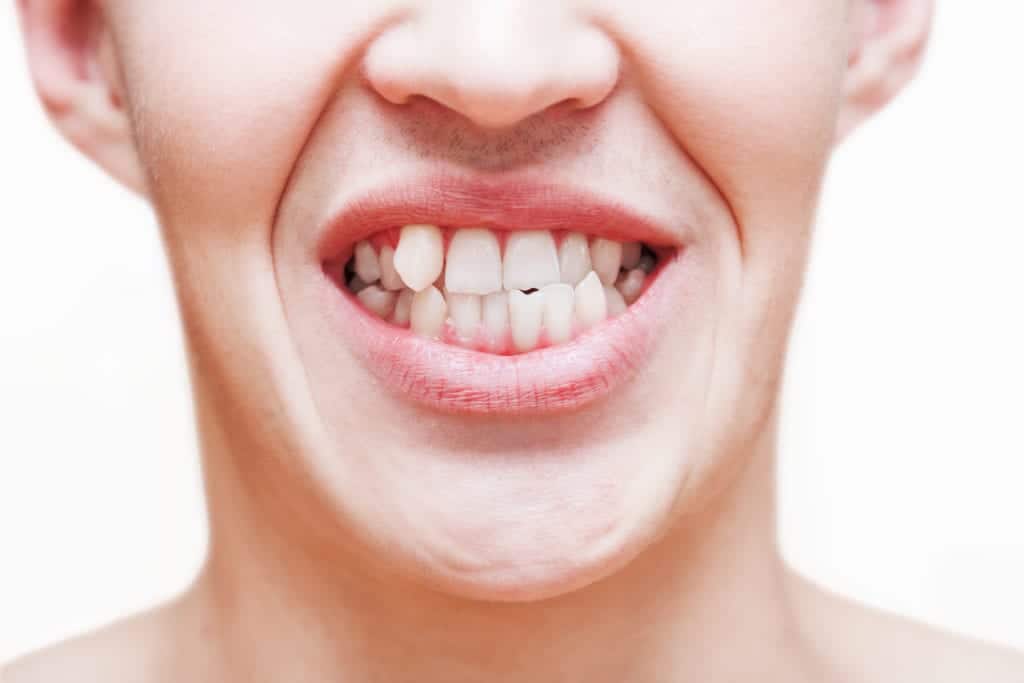
Invisalign® is very effective when used to correct minor to moderate crowding, spacing and rotation issues, or orthodontic relapse. If you’ve had braces in the past and your teeth have shifted back, Invisalign® is a great option to correct the issue.
However, Dr. Fleschler does not recommend Invisalign® for major orthodontic and bite alignment issues. In these cases, she refers patients to an orthodontic specialist.
What Does Invisalign® Treat?
At Dr. Fleschler’s we place patients in Invisalign® for most mild to moderate orthodontic needs. Here are issues that Invisalign® treats very well:
- Crooked teeth
- Overbite
- Crossbite
- Gaps in teeth
- Open bite
- Crowded teeth
The Invisalign® Process
Dr. Fleschler will take an impression of your teeth which will be sent to the Invisalign® lab and used to construct a series of custom aligners. You will wear each aligner for approximately 2 weeks before moving on to the next aligner in the series. Each aligner will gradually shift your teeth closer to their intended position. Once the process is complete, you will be able to enjoy the benefits of beautiful, straight teeth.
In order to achieve optimal results, you must wear the aligners for at least 20 hours a day. The only time they should be removed is while you are eating or brushing your teeth.
Dr. Fleschler is the best dentist I've ever been to, and the only dentist I've been to in whom I've had complete confidence. She does an excellent, careful job. She explains what she's doing and why. Her offices are beautiful and very professional. Her staff, such as Marcy, Nancy and Lisa, are really excellent as well. I'm very happy with Dr. Fleschler's office and wouldn't consider going anywhere else.
How Often Do I Change To A New Set Of Aligners?
Invisalign® ’s aligner trays are used for two weeks. At that point, they have achieved the movement they were designed for and they are discarded. A new set then begins the next step of the moving process.
Will I Have To Wear A Retainer After I Have Invisalign®?
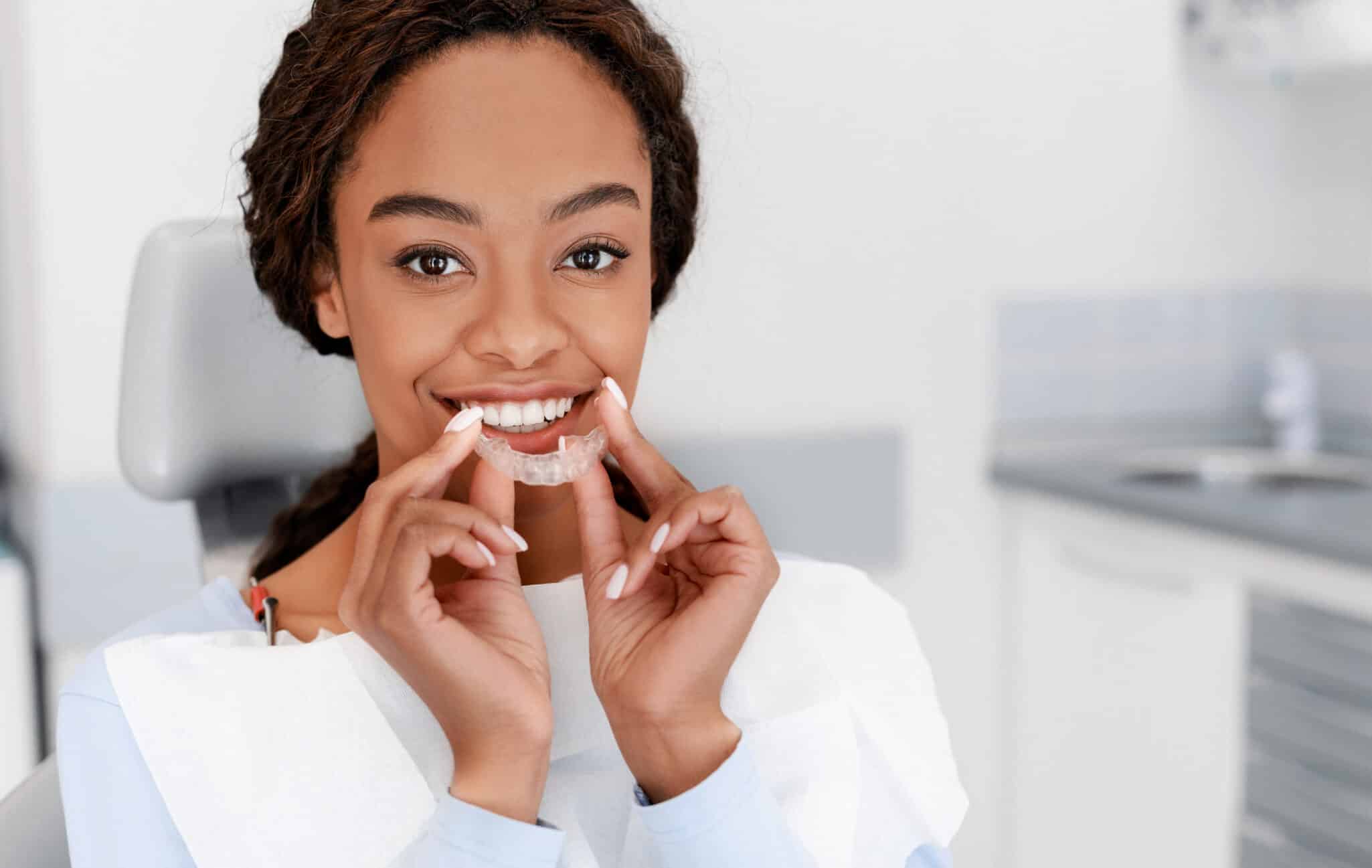
Just as you do with braces, when your teeth have been moved into their final positions, it will be necessary to wear a retainer to keep them in place. The standard retainer with Invisalign® is called Vivera®. These retainers are similar to the acrylic aligner trays, but the material is thicker and more durable, as the retainers have to last for far longer periods.
Once your teeth have moved, your jawbone builds new bone around their new positions. This is what keeps your teeth in place moving forward. But this doesn’t happen until at least one year and possibly longer. After a year, you can usually wear your retainer 3 to 5 times per week, rather than every day.
What Conditions Can This Treatment Not Be Used To Treat?
For more severe movement needs, Invisalign® may not be sufficient:
- Tooth shape — Some patients have teeth that aren’t ideal for fitting into the aligner trays. Short, round, pegged teeth or those with severe tips may keep the trays from achieving a good grip.
- Tooth position — When the mouth is overcrowded, teeth can rotate. If the rotation is over 20 degrees for molars, Invisalign cannot be used. Higher rotation can be tolerated with canines, premolars, and incisors. If a tooth is tilting forward or backward over 45 degrees, Invisalign® will probably not be able to straighten it.
- Large gaps — Invisalign can only reliably close up to 6mm of space per arch.
- Intrusion and extrusion — Traditional braces have the force to raise or lower teeth in the jawbone, but Invisalign® cannot.
- Midline movements — In patients where the front teeth are off of their midline, Invisalign® can only correct a discrepancy of 2mm or less. Anything larger needs braces.
- Previous dental work — Dental bridges usually preclude the use of Invisalign. Also, crowns and porcelain veneers can keep the aligner trays from bonding properly to the surface.
- Extractions — Invisalign isn’t usually right for patients requiring extractions before treatment.
Will Invisalign® Aligners Affect My Speech? Will They Make Me Lisp?
You may have heard rumors of an “Invisalign lisp.” It is true that some patients develop a temporary lisp when wearing their aligner trays. A lisp is a speech defect that causes “s” and “z” sounds to be pronounced as “th.” Lisps are caused by improper tongue placement inside the mouth during speech. This affects airflow and pronunciation.
Some patients with Invisalign® (and with traditional braces, by the way) develop lisps because the aligner trays alter the space within their mouth, causing the tongue to move a little differently, and altering some pronunciation. The vast majority of patients simply adjust to the thin plastic trays and the temporary lisp is just that…temporary.
What To Do When My Treatment Is Over
Once your teeth have been moved to where Dr. Fleschler and you have agreed is the perfect location, there’s nothing left to do with your Invisalign® aligner trays. You won’t wear them any longer. Your teeth won’t need special cleaning or anything.
But, just as with traditional orthodontics, after your teeth have moved it’s important to keep them from trying to move back to their original, flawed positions. With traditional braces, that’s where retainers come in. They usually click into the roof of the patient’s mouth and wire wraps around the teeth to keep them in place. The problem with retainers is that hard plastic can be uncomfortable. Plus, since you only have one retainer, it can begin to have an odor over time.
Invisalign® doesn’t use a retainer with a plastic piece that snaps onto the roof of your mouth. Instead, Vivera® retainers made from the same material as the Invisalign® aligners keep the teeth in place. These Vivera® retainers are similar to the aligners, but they are thicker and more durable because they need to be worn for longer than just a couple of weeks. You will receive four Vivera® retainers to be swapped out over the course of your retention period.
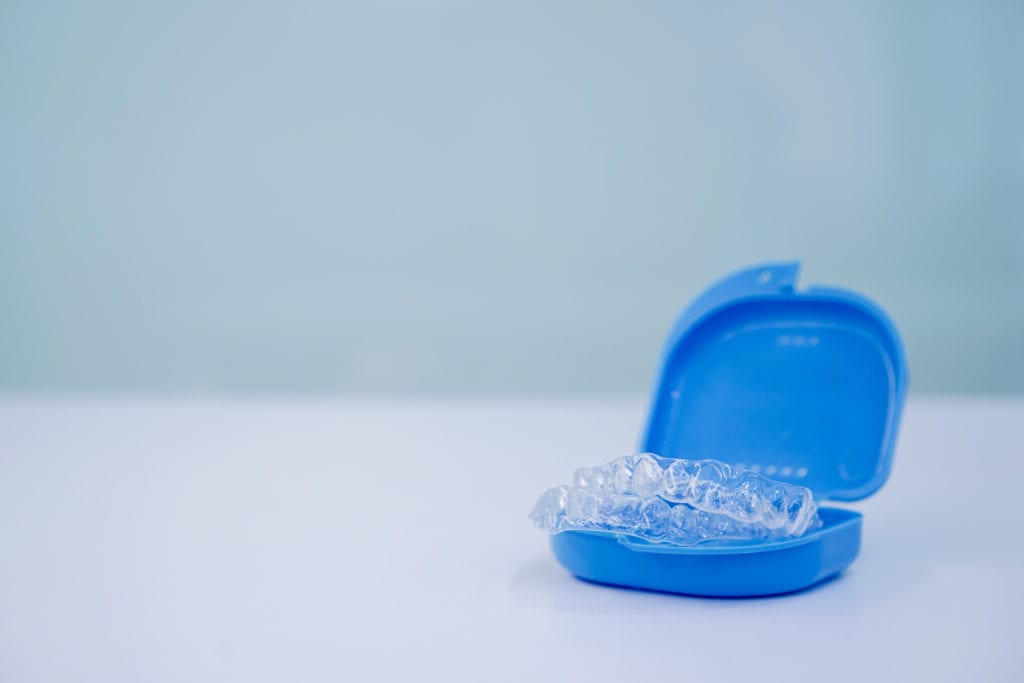
How Long Does The Invisalign® Process Usually Take To Move The Teeth?
An interesting thing about Invisalign® is that not only is the process far more comfortable than traditional metal bands and wires, but it also moves your teeth more quickly. On average, it takes about two years for traditional braces to straighten your teeth. Invisalign® averages 12-14 months to achieve the same movement.
Is Invisalign® Painful?
When Dr. Fleschler’s patients finish one aligner and move onto the next, there can be some mild soreness for a couple of days as the teeth begin the next stage of their movement. This aching is easily handled with over-the-counter pain medication.
The pain involved with the new movement, however, is nothing like the pain that occurs with traditional braces after the wires have been tightened and new rubber bands placed.
What Foods Should You Avoid With Invisalign®?
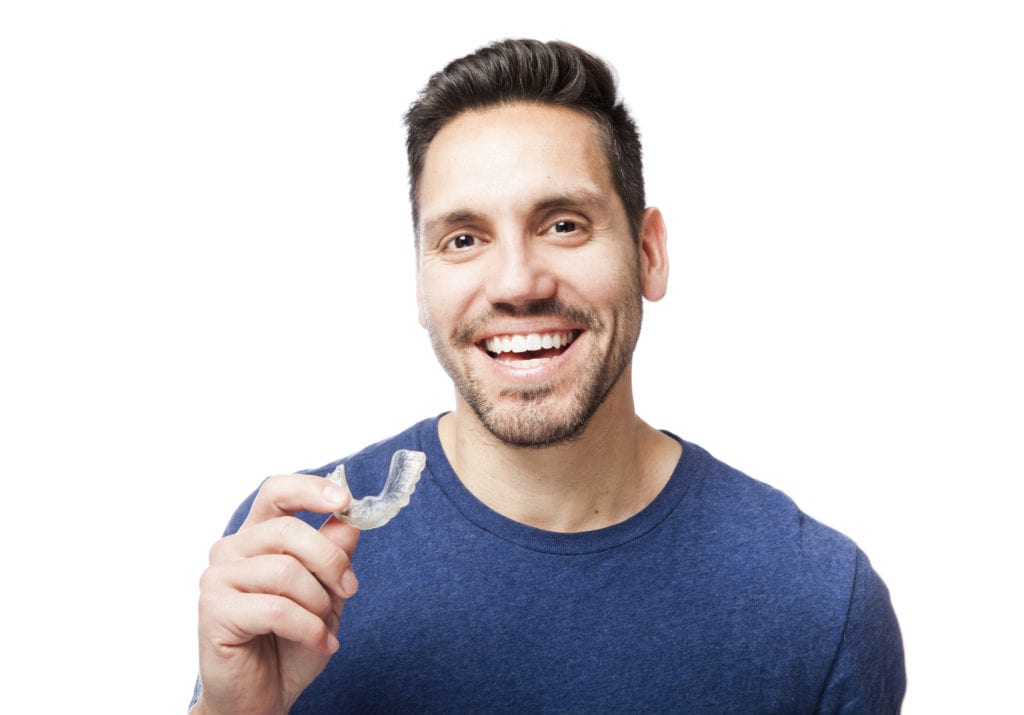
Another great thing about this orthodontic system is that our patients can eat whatever they choose. That’s because when you’re eating, you simply remove your Invisalign® aligner trays. When you’re finished eating, you put them back in.
That’s quite different from traditional bands and wires, where it is relatively easy to dislodge the bands. With traditional braces, patients need to avoid overly sticky and chewy foods, very hard foods, and foods like corn on the cob. Plus, getting food out from in between and under the bands is a difficult task.
Patients cannot eat anything with the Invisalign® trays in their mouth. No chewing gum. No eating anything. You can drink water with your aligner trays in, but that’s about all we recommend. Chewing can damage your aligner trays. Plus, drinking sugary beverages, such as sodas or juices, can allow the sugars to get behind the aligner trays and that’s not a good idea. You can eat or drink whatever you want — you simply remove your aligner trays.
Can Invisalign® Move My Teeth As Effectively As Traditional Braces?
It’s easy to assume that because Invisalign® is so comfortable it can’t be doing much real work moving the teeth. After all, traditional braces have tightening sessions every six weeks that leave the teeth quite sore for a couple of days. There are bands and wires pulling the teeth every which way. Now that’s orthodontics, right?
People often bring this up with Dr. Fleschler, assuming that the pain and irritation of metal bands and wires must be necessary. That’s not the case. The goal is to move the teeth as necessary, whether that’s closing gaps, straightening, whatever. Invisalign® does this just as effectively as traditional braces: it just does so without the medieval torture of metal bands, wires, and rubber bands. You could actually say that Invisalign® handles the process much more efficiently. The secret is using computer-mapping technology to plot the entire progression of the necessary movement of the teeth. This dictates the design of each successive aligner tray, setting the amount of pressure each tray needs to place to keep moving the teeth toward their final positions.
Invisalign® does demand a certain amount of discipline on the part of the wearer. If the patient doesn’t wear his or her aligner trays for 22 hours a day, their progress will be slower. After your treatment is complete, if you don’t wear your Vivera® retainers, your teeth can move back. This is exactly what happens with braces and plastic retainers.
But once Dr. Fleschler notices a teenage patient has not been wearing his or her aligner trays (there are blue compliance indicator dots on the back of every aligner tray, denoting the time-worn), she can explain the alternative — metal bands and wires — and the teen suddenly ups their wearing time to the necessary 22 hours per day.
Truth is, Invisalign® is just as effective for the majority of typical orthodontic needs. Can this system rotate molars? No. Can it replace dramatic movement that would require headgear? No. Those are relatively extreme orthodontic needs. For the average person, Invisalign® does a wonderful job without the irritating, embarrassing, painful experience that is traditional braces.
Does Invisalign® change the shape of your face?
Invisalign® will not change your face shape in a detrimental fashion. However, if you had protruding teeth, your lips were likely pushed outward. This will be changed after Invisalign® brings the teeth backward and straightens them. If you have an overbite, an underbite, or a crossbite, there will be some change, as well. These are typically cosmetic improvements thanks to your newly aligned teeth and smile.

Disadvantages Of Invisalign®
While most patients really love having Invisalign’s clear aligner trays move their teeth, the system isn’t perfect. Here are some areas that could be deemed as disadvantages to Invisalign:
- Cannot be used for more complex movement situations: back tooth bite issues, need to rotate canines or premolars, need to move teeth vertically, etc.
- Must be disciplined, as aligner trays need to be worn 22 hours per day to be effective
- Typically, somewhat more expensive than traditional braces
- Must remove aligner trays to eat or drink anything other than water
Is Invisalign® Covered By Dental Insurance?
Most dental insurance plans cover Invisalign® treatment just as they would traditional orthodontic treatments. Coverage amounts vary widely between plans. At Dr. Fleschler’s we work with insurance companies to attain the highest level of coverage for our patients.
What To Expect During My Consultation For Invisalign® In Houston, TX
Dr. Fleschler treats every consultation as a complete give and take of information between herself and the patient. She encourages any questions and seeks to fully inform the patient about the proposed treatment, in this case Invisalign®.
For Invisalign®, the most important part of your consultation is for Dr. Fleschler to be sure this system of acrylic aligner trays can work for your unique situation. As mentioned above, there are certain more extreme orthodontic problems where Invisalign® cannot be used. During your consultation, she will decide if your tooth movement needs can be handled with Invisalign®.
From there, she’ll explain the entire process, from the 3D planning of your tooth movement to how often you’ll return for checkups. She’ll stress the need to be fully invested and disciplined about wearing your aligner trays for at least 22 hours every day. She’ll go over how to clean your trays and what your follow-up will be when your tooth movement is complete.
Schedule Your Appointment For Invisalign® In Houston, TX
To learn more about your candidacy for Invisalign® in Houston, TX, fill out our contact us form here or call us at 713-660-6500 today!


